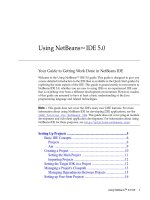3120lect 5
Bạn đang xem bản rút gọn của tài liệu. Xem và tải ngay bản đầy đủ của tài liệu tại đây (4.16 MB, 24 trang )
Geology 3120 - Sedimentary Structures
Outline
•
Review the geologic history exercise from last time
•
Contacts, primary structures, and secondary structures
•
How to determine which “way is up”…
•
Cross-bedding, graded-bedding, reverse graded-bedding
•
Determining way up using top surface features - ripples,
mudcracks, raindrops, footprints
•
Determining way up using bottom surface features - load
casts
•
Determining way up using features within rocks geopetal, bioturbation, stromatolites, flame structures,
pillow lavas
Block model for exercise
15 Ma Dike
12 Ma Dike
Normal Fault
22Ma
20 Ma
Fold
60 Ma
Layer G
Fold
50 Ma
70 Ma
70 Ma
Layer B
80 Ma
80 Ma
70 Ma
Thrust Fault
60 Ma
70 Ma
Geologic History
15 Ma Dike
12 Ma Dike
•
12 Ma dike
•
15 Ma dike
•
Normal Fault
22Ma
20 Ma
Fold
60 Ma
Layer G
Fold
50 Ma
70 Ma
70 Ma
•
20 Ma sed
•
22 Ma sed
•
Erosion
•
Thrust fault
•
Folding
•
Layer B
•
60 Ma sed
•
Layer G
•
70 Ma sed
•
80 Ma sed
Layer B
80 Ma
80 Ma
70 Ma
Thrust Fault
Normal fault
60 Ma
70 Ma
Contacts, Primary Structures & Secondary
Structures
•
Contact - a boundary between rock units
•
Primary structure - structures that form during lithification
•
Secondary structure - structures that form after lithificaiton
Contacts, Primary Structures & Secondary
Structures
•
Contact - a boundary between rock units
•
Primary structure - structures that form during lithification
•
Secondary structure - structures that form after lithificaiton
Whic
h
way
is
up?
Today
Option 1
Overturned
syncline
Option 2
“up side down”
overturned
anticline
Cross-bedding
Checkerboard Mesa, Zion National Park
Concave up
Younger
Y
Flow direction
Older
Graded bedding
Younger
Y
Older
•
Decrease in depositional energy with sedimentation
•
Example: flood deposits, turbidity currents
Graded
bedding
Younger
Y
Older
•
Decrease in depositional energy with sedimentation
•
Example: flood deposits, turbidity currents
Reverse (Inverse) Graded
Bedding
Younger
Y
Older
•
Increase in depositional energy with sedimentation
•
Example: debris flows (a lot less common than normal graded beds)
Ripple marks
•
Symmetric ripples indicate
bi-modal current
•Concave
Y
•
Asymmetric ripples indicate
unidirectional current
= up
Mud
•
•
Desiccation of
cracksmuddy sediments
Mud cracks
5 cm
Raindrops
Y
•
Limited to terrestrial sediments
Footprints
Y
•
Limited to terrestrial sediments
Load casts
•
Protrusion of material
into a layer below
•
Load casts indicate
the base of a layer, not
the top of a layer
•
Determining the
current direction may
be possible
Geopetal Structures
•
A “natural” carpenter’s level
Shell or cavity in the rock
Matrix
Y
Infill material (I.e., calcite)
Bioturbation
•
Habitation burrows
•
Feeding burrows
•
Movement
Y
Stromatolites
Y
•
Sharks Bay, Australia
•
Cyanobacteria grow upward toward the surface
Flame structures
Y
•
Less dense material intrudes into material above
• Caused by rapid loading of turbidite sands
Pillow lava
Upper curved surface
Y
“V “ notch
References
Slide 8
/>Slides 9-15, 17
Busch, R. M. and D. Tasa, Laboratory Manual in Physical Geology, 3rd. Ed., American
Geological Institute and National Association of Geology Teachers, 260 p., 1990.
Slide 18
/>
Slide 20
/> />







